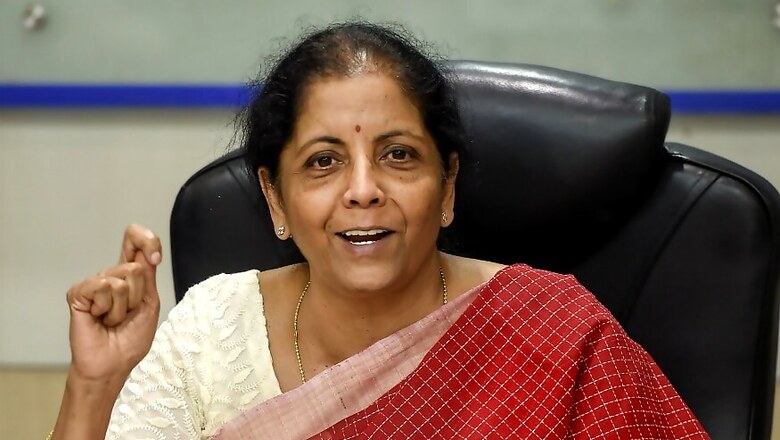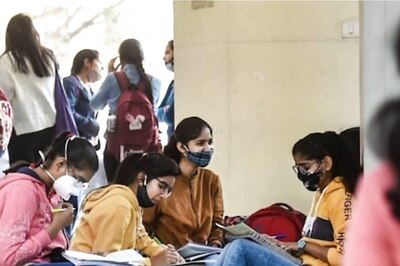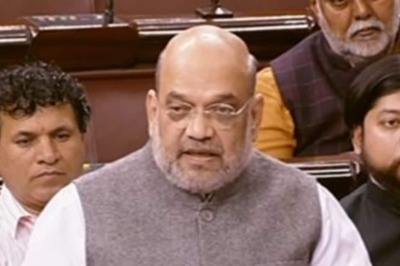
views
The government on Saturday relaxed its fiscal deficit target, raising spending and slashing taxes as it seeks to attract foreign investment and increase consumption in the wake of a prolonged economic slowdown. Finance Minister Nirmala Sitharaman announced the changes as part of the country's annual budget in parliament, a day after official data showed that Asia's third-largest economy grew five percent last year, its slowest expansion since the 2008 global financial crisis.
Following are the key takeaways from Nirmala Sitharaman’s budget speech:
- The Centre introduced a new income tax regime, optional for taxpayers foregoing all deductions and exemptions. The finance minister has proposed 10% tax for income between Rs 5 lakh-7.5 lakh versus current 20%; 15% for income between Rs 7.5 lakh-10 lakh against 20%; 20% for income between Rs 10-12.5 lakh against 30%; 25% for income between Rs 12.5 -15 lakh against 30% and 30% for income above Rs 15 lakh.
- The finance minister announced Rs 2.8 lakh crore spending on agriculture, irrigation and allied sectors.
- Rs 12,300 crore has been allocated for the government’s Swachh Bharat scheme.
- Government is to guarantee Rs 5 lakh to account holders in case of bank failures. This comes amid the PMC crisis.
- The government has set aside Rs 99,300 crore for the education sector in FY21. Of this, Rs 3,000 crore will be allocated for the skill segment.
- The government also plans to offer full-fledged online education programmes to help students belonging to deprived sections of the society, who do not have access to higher studies.
- Rs 1.7 lakh crore has been provided for transport infrastructure in 2020-21. 1,150 trains to run under the PPP mode and four stations to be developed with the help of the private sector. Also, 100 more airports will be developed by 2025 to support the UDAN scheme.
- The fiscal deficit target for next financial year beginning has been pegged at 3.5 percent of the gross domestic product (GDP).
- The government is also planning to raise funds by selling part of its stake in Life Insurance Corporation of India (LIC) through an initial public offer (IPO).


















Comments
0 comment